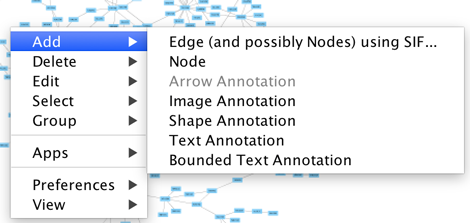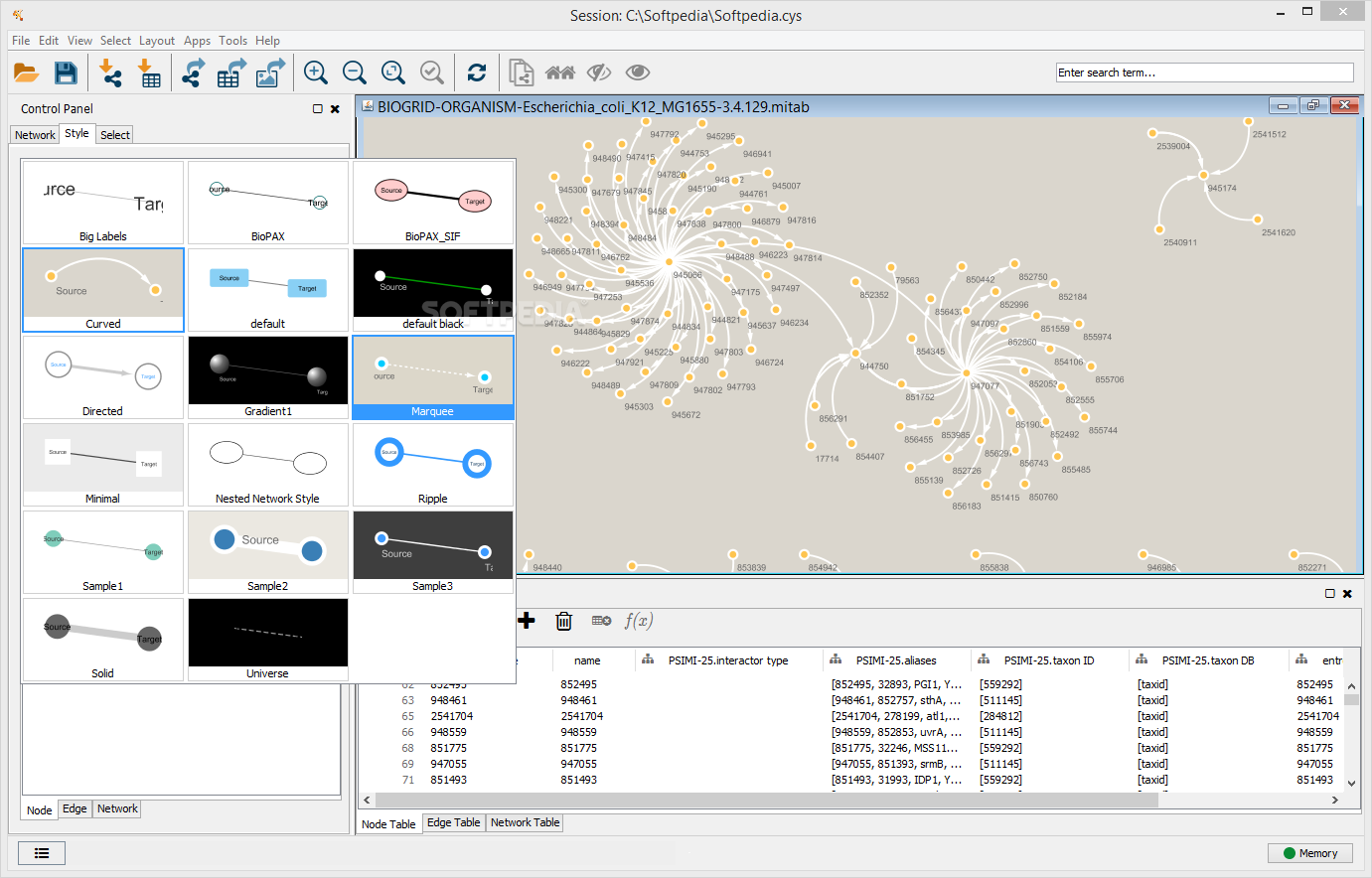

In other words, the web site itself can rely on web standards (HTML, CSS and JavaScript) for embedding and interacting with Cytoscape Web. This architecture has the advantage of using the Flash platform to implement complex and interactive vector images that behave consistently across major browsers, but without requiring the web site to be entirely built with this technology. The main network display component of Cytoscape Web is implemented in Flex/ActionScript, but a JavaScript application programming interface (API) is provided so all the customization and interaction with the network view can be easily built in JavaScript without needing to change and compile the Flash code. Cytoscape Web is not intended as a replacement for the Cytoscape desktop application, for example, it contains none of the plugin architecture functionality of Cytoscape instead it is intended as a low overhead tool to add network visualization to a web application.Ĭytoscape Web is a client-side component that requires no server-side implementation, and allows developers to choose any server-side technology, if necessary. Using basic programming skills, Cytoscape Web can be customized and incorporated into any web site.
CYTOSCAPE 3.2 SOFTWARE
The field of network visualization is lacking an interactive, easily customizable, open source, web-based visualization component.Ĭytoscape Web is an interactive, web-based network visualization tool, modeled after the popular Cytoscape software ( Fig. Cytoscape ( ) is an open source Java network visualization and analysis tool that provides a large array of useful features (Shannon et al., 2003), but is not specifically designed for use on the web except via Java WebStart or as a library to generate static network images for web display.
CYTOSCAPE 3.2 CODE
This commercial software is customizable within the bounds of the code already written, but is not open source. yFiles Flex ( ) is a rich Internet application with a feature-rich user interface, an architecture that balances client/server work and supports efficient data communication. TouchGraph ( ) is another Java applet for network visualization, but provides only one mode of network interaction designed for exploration and is not easily customizable. jSquid (Klammer et al., 2008) expands Medusa's functionality, but does not provide an easy way for the client web site to change and interact with the network view after it has been rendered.

Medusa (Hooper and Bork, 2005) is a Java applet originally used in the STRING database (Jensen et al., 2009) and by many other web sites for network visualization, but lacks advanced features, such as detailed customization of the network view. However, current web-based network visualization components lack many useful features of their desktop counterparts. Network visualization components are especially valuable to help researchers interpret their data as part of data analysis tools. Increasing amounts of high-throughput data are being collected, stored, shared and analyzed on the web, highlighting the need for effective web-based data visualization.


 0 kommentar(er)
0 kommentar(er)
